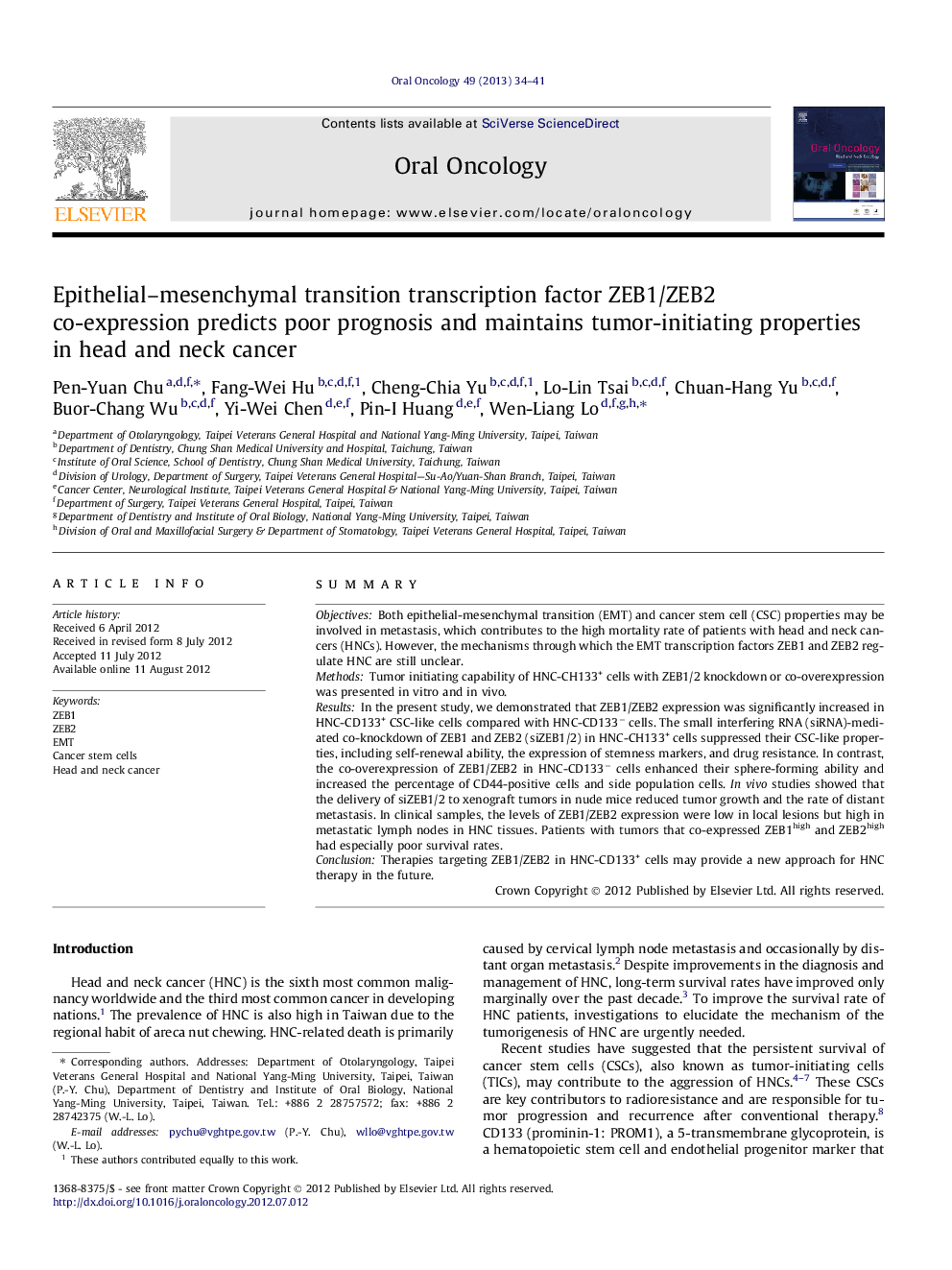| Article ID | Journal | Published Year | Pages | File Type |
|---|---|---|---|---|
| 6055252 | Oral Oncology | 2013 | 8 Pages |
SummaryObjectivesBoth epithelial-mesenchymal transition (EMT) and cancer stem cell (CSC) properties may be involved in metastasis, which contributes to the high mortality rate of patients with head and neck cancers (HNCs). However, the mechanisms through which the EMT transcription factors ZEB1 and ZEB2 regulate HNC are still unclear.MethodsTumor initiating capability of HNC-CH133+ cells with ZEB1/2 knockdown or co-overexpression was presented in vitro and in vivo.ResultsIn the present study, we demonstrated that ZEB1/ZEB2 expression was significantly increased in HNC-CD133+ CSC-like cells compared with HNC-CD133â cells. The small interfering RNA (siRNA)-mediated co-knockdown of ZEB1 and ZEB2 (siZEB1/2) in HNC-CH133+ cells suppressed their CSC-like properties, including self-renewal ability, the expression of stemness markers, and drug resistance. In contrast, the co-overexpression of ZEB1/ZEB2 in HNC-CD133â cells enhanced their sphere-forming ability and increased the percentage of CD44-positive cells and side population cells. In vivo studies showed that the delivery of siZEB1/2 to xenograft tumors in nude mice reduced tumor growth and the rate of distant metastasis. In clinical samples, the levels of ZEB1/ZEB2 expression were low in local lesions but high in metastatic lymph nodes in HNC tissues. Patients with tumors that co-expressed ZEB1high and ZEB2high had especially poor survival rates.ConclusionTherapies targeting ZEB1/ZEB2 in HNC-CD133+ cells may provide a new approach for HNC therapy in the future.
